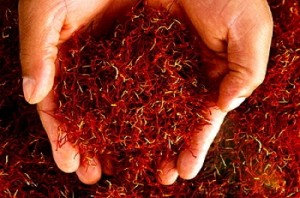Moroccan Saffron Harvesting & Saffron Tour, Morocco Travel Guide
Saffron is a deep red spice that comes from the purple Saffron Crocus, or Crocus Sativus, and is found in many Moroccan food recipes, is used as a dye, and is believed to have medicinal benefits. The spice itself comes from the tiny thread stigmas of the flower which are traditionally hand-picked and then sun-dried to bring out the aromatic flavor. It takes 140 flowers to produce just one gram of saffron that accounts for its high market price, in fact, saffron has been said to be worth its weight in gold, literally!




